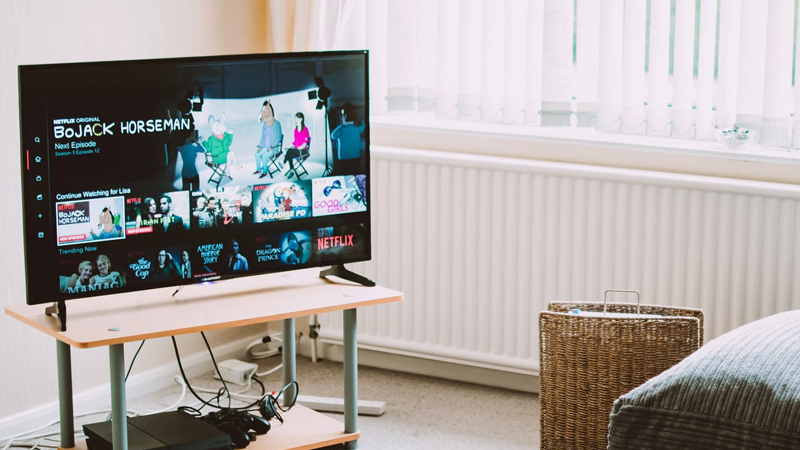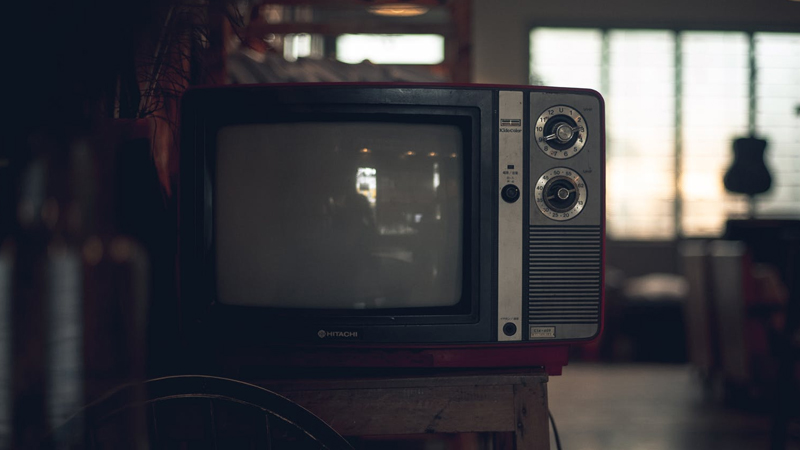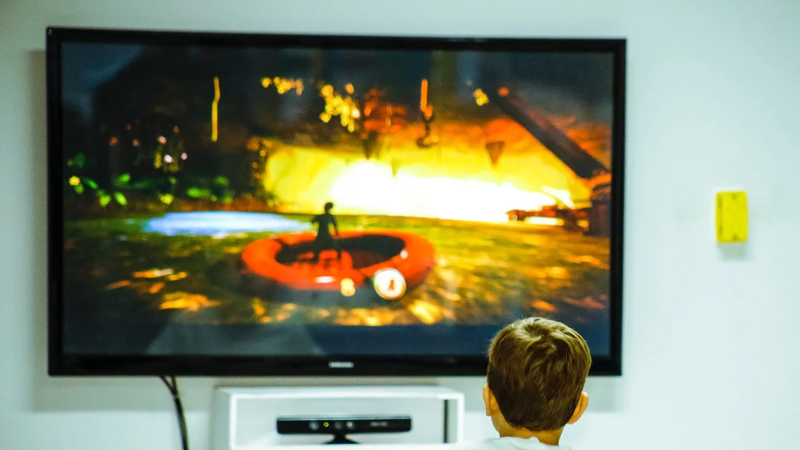TV Brightness Keeps Changing: How To Fix?

Many TVs have come with adjustable brightness settings that can cause less than optimal viewing experiences. This sees the TV get brighter or darker without user input, making some TVs very hard to view anything on. So how do you fix TV brightness changing?
These brightness settings are often linked to battery or power saving, eco settings, contrast or other functions linked to the light sensor. By disabling or changing these settings via a different picture mode, it will stop this from happening.
We’ll look at the major TV brands and settings to learn how to adjust them, as well as some tips for older TVs or generic TVs that you can’t find the settings for. So join me as we go through this guide to get your TV working how you want.
Samsung TVs

Samsung TVs will often use the terms adaptive contrast, energy-saving, eco mode or motion lighting to refer to the automatically adjusting light levels. Since 2017, this setting tends to be called Ambient Light Detection Function, or ECO sensor on older models.
Keep in mind that some Samsung TVs don’t allow you to switch certain options unless it is in Standard Picture mode.
For 2016 models or older go to System, then expand Eco Solution and turn Eco Sensor to off.
For Samsung TVs newer than 2016, open up settings then go to General, Ambient Light Detection, and then use the accompanying slider to increase or decrease the sensitivity. If you put this to a minimum or off, this will also stop the auto-dimming.
Some other options can be to swap the picture mode to see if that helps. Try changing your Samsung TV to Movie Mode, this can stop the auto-dimming.
One way around the auto-dimming feature is to look at the RGB settings. Go into picture settings and adjust the RGB Offset down by about 50% in White balance from 25 to 9 or 10. Increase the brightness to about 10% higher to the mid 50s.
This can trick the TV to think the screen is not dark enough, preventing it from dimming.
A final option requires accessing the Service mode.
Go into Service mode by pressing mute, and then pressing the 1, 8, and 2 on the remote. After that, press the power button and the Samsung TV should reboot and show you the Service menu.
Out of Option, Control, Debug, SVC, and ADC/WB, choose SVC and then select Other Setting. Choose CAL Data Restore, run it, then head back to the Service menu. Now select Advanced instead of SVC and press 0 on your remote control four times.
This should display Picture_2D and then you can select SubSetting, select PWM Mid, PWM_MOVIE_INI and PWM Min and change whatever value it has to 100 for all.
LG TVs

Many LG TVs feature something called Ambient Light Detection, which uses sensors to detect the amount of light in the room and change the brightness in response. This means that the screen will become darker in a dark room, and get brighter in a room filled with light.
To stop this from happening, you’ll have to disable the setting from within the TV itself.Go to the picture menu and find settings, then go into advanced and picture. Enter into the Energy Saving options and switch the Energy Saving to OFF.
Sony TVs
Sony TVs including the Bravia are best adjusted by going into the Scene section under settings. Find Music then go to settings and then video settings, under advanced settings, you will find a checkbox for ‘Detect Dark Scenes and Dim’, make sure it is unchecked.
Another option to check is the Dynamic Backlight Control function. This will adjust the brightness of the screen when certain onscreen items display, like subtitles.
Go to the Home icon, and select the Settings gear icon. Either choose Select Picture & Display or Select Display & Sound, then Picture adjustments, Advanced settings, and then Brightness. You can then set Advanced Contrast Enhancer to Low or Off.
In the same section, you should be able to find Light Sensor settings that you can try switching to off as this will also automatically adjust brightness in changing light situations. This is sometimes found under Eco Settings.
For other Sony models, open up Picture Settings and scroll to the Ambient Sensor option from the Picture Settings menu. Toggle this off to stop automatic dimming.
Some users have reported that switching between widescreen and standard picture mode seems to disable the dimming feature.
Philips TVs

Go through the Home menu and then find settings and open up All Settings, then select Picture, and then go into Expert Mode settings and select Contrast Mode. Try setting Dynamic Contrast to minimum or maximum to see how this works.
Philips TVs also have energy-saving modes which can be accessed either via the settings or picture mode. Turning these off will stop the energy-saving mode from taking over the brightness setting.
TCL TVs
TCL TVs perform auto-dimming the usual ways, through both the economy/power settings and via the presets.
Unfortunately, there does not seem to be a way to disable the auto-dimming feature, although some users have stated that updating the TVs firmware does help the feature work better and not get activated as easily by a change in light.
However, disabling contrast settings or high dynamic contrast settings has helped reduce the large swings the auto-dimming feature will have, such as going from very bright to very dark quickly.
Roku Systems
Under the Advanced Picture Control setting called local dimming, or local contrast, you can disable this if it seems to be affecting the brightness settings, causing a bad viewer experience.
This is best accessed by hitting the star button on the remote and looking for a setting in Advanced Picture settings. For some models, it is called dynamic contrast or DCR, and try turning that off.
Under Picture Mode, you can also try changing the power mode to see if that helps. Often TVs are set to Low Power for power saving, so try disabling this to see if it adjusts the brightness more to what you want.
Universal Remotes

If you’ve lost the remote or it no longer works, consider getting a replacement from the manufacturer or by looking into a universal remote. To perform many of the functions listed above, you’ll need the remote as even the buttons on the TV won’t work for these functions.
Amazon stocks the Philips Remote Control which is stated to work for Samsung, Vizio, LG, Sony, Sharp, Roku, Apple TV, RCA, Panasonic, Smart TVs, Streaming Players, Blu-ray players, and DVD players among many more.
The Philips device comes pre-programmed and you can run the Automatic Code function which will help connect it automatically to most of the major brands without needing to go through the list of codes individually.
